Part of owning a lawn mower and other small engine equipment is dealing with any mechanical problems that might arise.
Tackling problems that are directly related to the inner workings of the engine can be a little bit more intimidating than others, but they aren’t always as complicated as they might appear. This is usually the case when dealing with a seized lawn mower engine.
Determining why your engine won’t crank and going about repairing it can actually be pretty easy in some cases.
I’ll go through some of the telltale signs of a seized lawn mower engine and talk a little bit about the steps you should follow to get your pistons moving again.
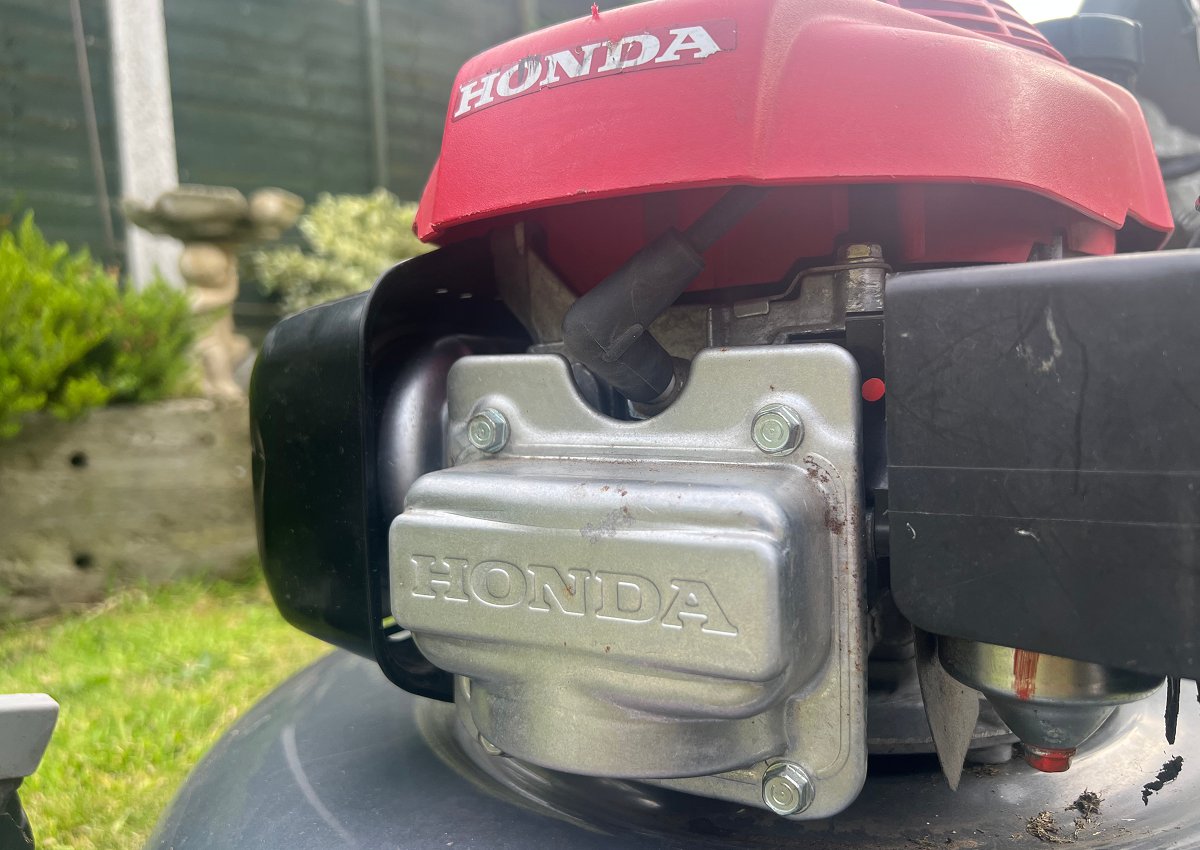
How to Tell if Your Lawn Mower Engine is Seized
There are two main factors that can help you figure out how to tell if your lawn mower engine is seized.
Most commonly I hear of mower engines seizing when in use. You can tell your engine has most likely seized if it is running and all of the sudden makes a distinct grinding sound and then dies.
What typically causes this is a lack of oil being delivered to a piston, causing it to lock up in place.
So, if something like this happens to you, check if your oil reservoir is low or empty first.
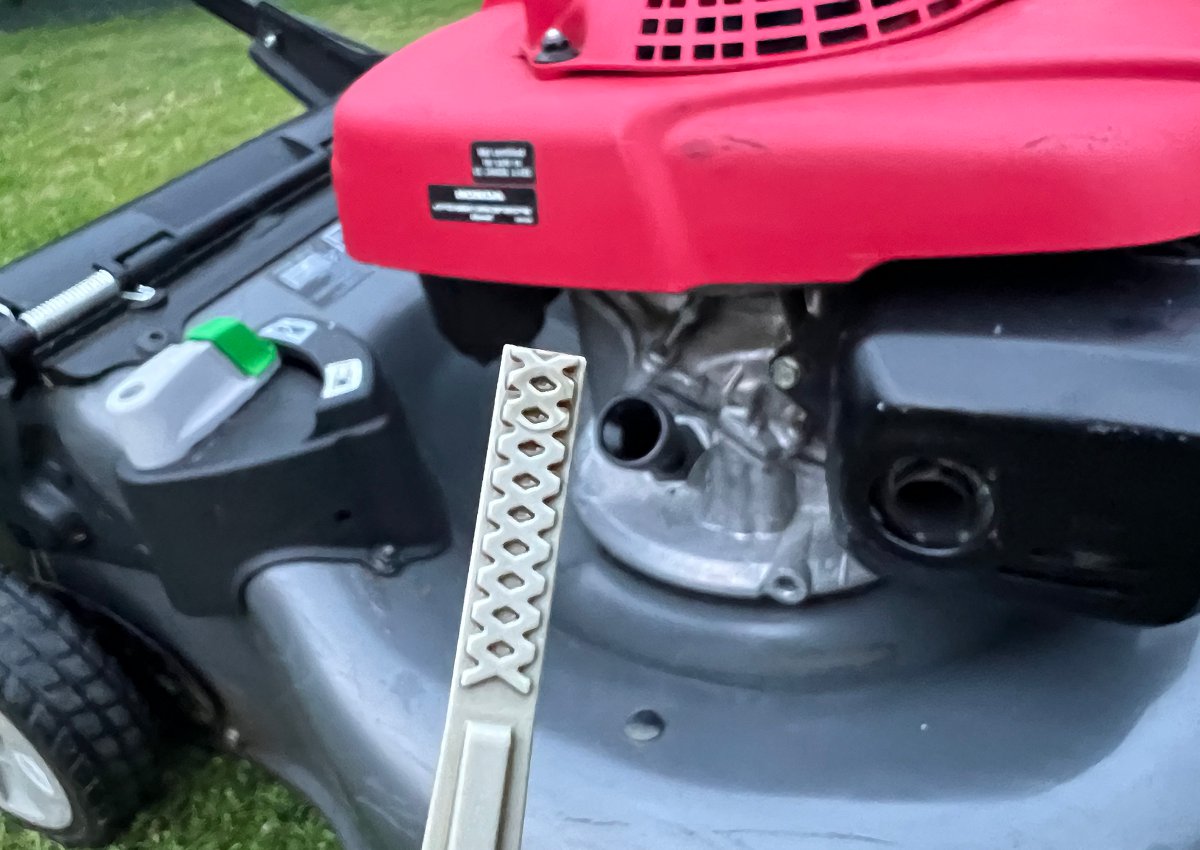
A lawn mower that ran out of oil and won’t start is a telltale indicator of engine seizure.
Another way you can determine if your engine has seized is by attempting to manually crank the engine by turning the blade or flywheel by hand.
Attempting to turn the blade works well if you’ve got a push mower that’s locked up, but I’d recommend trying to turn the flywheel if you’re dealing with a riding mower. If the flywheel or blade won’t turn, this means the engine is likely seized.
Engines that have been sitting for years on end without being run can end up seizing as well.
The last symptom of a seized engine can be a mower starter rope that won’t pull. On push mowers, starter ropes spin the flywheel to start the engine.
If you can’t pull your starter rope, it might be a sign that the flywheel is locked in place.
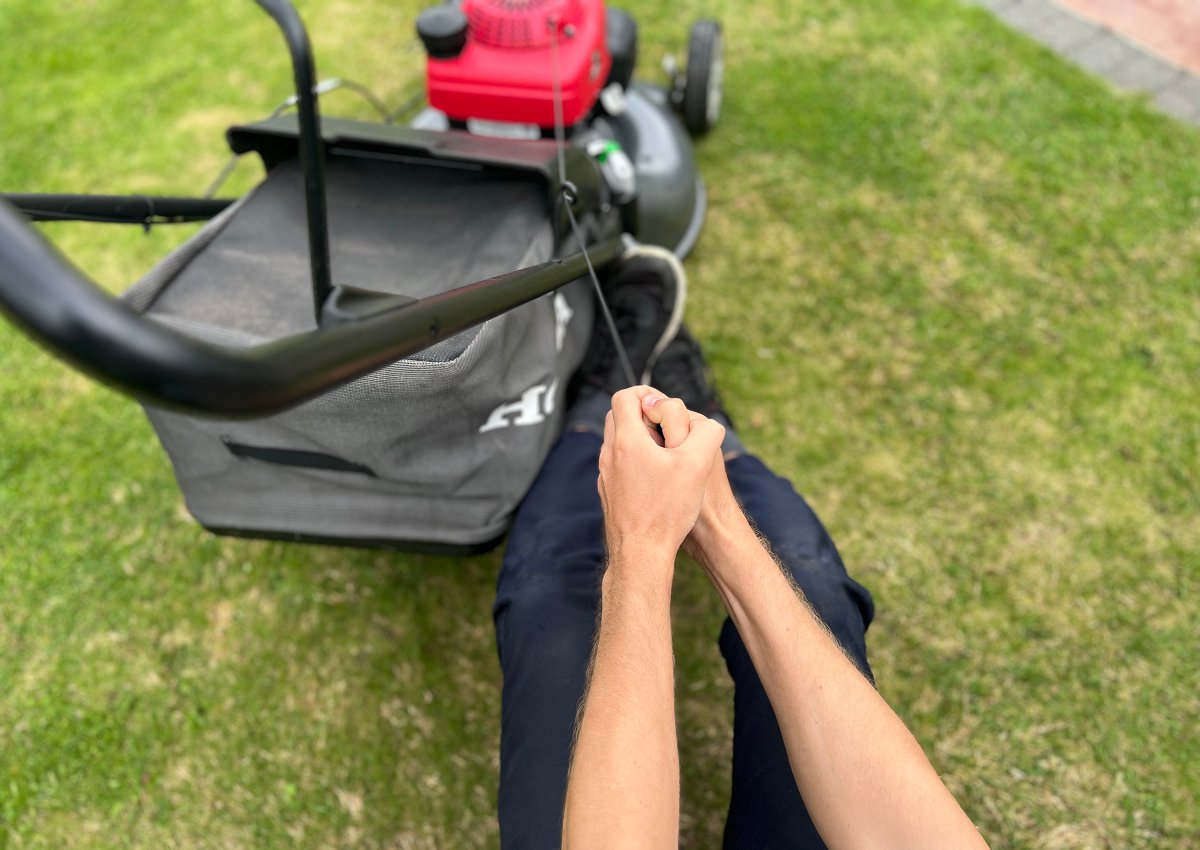
Can a Seized Lawn Mower Engine Be Fixed?
Most of the time a seized lawn mower engine can be freed fairly easily, but there are some cases where the only thing you can do is rebuild the entire engine or replace it.
When an engine seizes, there is a very high chance that at least a little bit of internal engine damage will occur. In some cases, the damage due to the engine seizure isn’t a huge deal, but in other cases, it can be pretty bad news.
The best thing to do if you seize your lawn mower engine is to try and free it up as gently as possible and assess other issues once you get it running again.
While I have heard of people that have seized their mower’s engine, freed it, and continued to use it without any issues; I have also heard of further engine issues resulting from damage caused by engine seizure.
This really depends on what exactly happens inside the engine in each case. But, let’s get into how to get your pistons moving again and the gear that is required.
What You’ll Need to Attempt to Fix a Seized Mower Engine – Equipment List
You won’t need much to do a little bit of seized lawnmower engine repair, but there are some key tools you’ll have to use to get the job done.
I’d say that most people have these things on hand, but even if you don’t, it’s all gear worth investing in. Here’s what you’ll need:
- Gloves
- Rag or paper towel
- Socket wrench
- Socket set including a spark plug socket
- Penetrating oil
- Engine oil
- Oil pan
How to Unseize a Lawn Mower Engine (The Best Thing to Try)
What I’m going to do here is describe the general process of how to unseize a small engine.
As I mentioned before, this approach usually does the trick. But, in extreme cases, your mower’s engine might have been too damaged to be freed any other way than by rebuilding the entire engine.
Don’t worry too much about the latter until you need to.
Here’s an overview of the best thing to try first:
- Remove the spark plug.
- Drain the engine oil.
- Spray some penetrating oil into the cylinder.
- Try to manually crank the motor.
- Add fresh motor oil.
- Reinstall the spark plug.
You don’t need a ton of experience to do this, and hopefully, by the end of it, your engine will be freed and running like new.
Now that you’ve got a general idea of the process, let’s talk about the steps in some more detail.
1) Remove Spark Plug
To get your spark plug out, pull off the spark plug boot and ignition cable first. This can usually be done by hand.
Just firmly grab the boot and gently twist it back and forth while lifting it off the spark plug’s terminal.
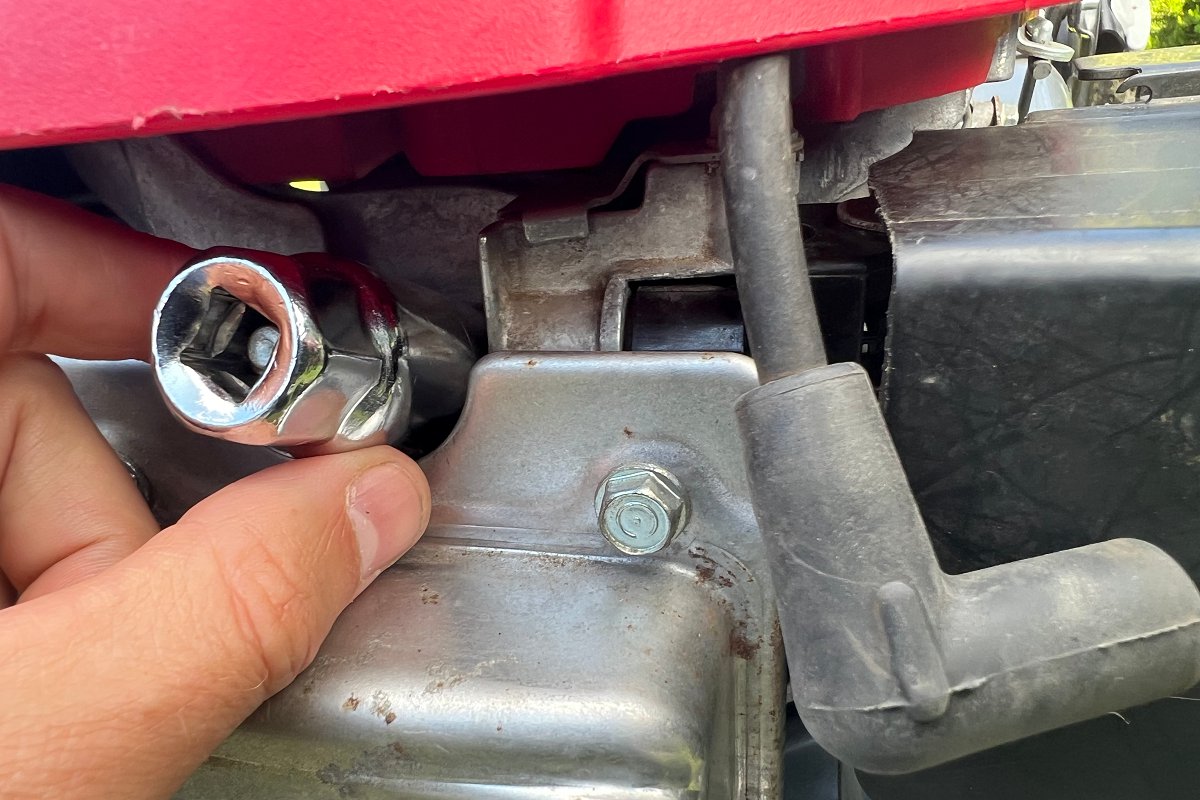
Next, set your spark plug socket onto the spark plug by hand. Doing this is a good idea because you want the socket to seat well so that the spark plug doesn’t strip.
Then attach your wrench and break the spark plug loose. Once loose, you can unscrew it the rest of the way by hand.
I would also suggest checking the state of your spark plug as long as you have it removed. Knowing how to tell if a lawn mower spark plug is bad isn’t super complicated, and replacing your spark plug yearly is best practice anyways.
2) Drain Engine Oil
After getting your spark plug off, the next thing you should do is completely drain the oil from your lawn mower’s engine.
Most of the time mowers have a drain plug on the underside of the mower deck or engine. If you’re having any trouble finding your drain plug you should consult your owner’s manual.
Make sure you grab your oil pan and set it underneath the drain plug, and then find a wrench or socket that fits the bolt correctly.
Gently break the bolt loose, and use your hand again to unscrew it the rest of the way. Make sure to let the oil drain completely before moving on.
3) Lubricate the Cylinder
You can do this either while you’re waiting for the oil to drain, or after the oil has drained completely.
Using penetrating oil like PB Blaster will be the most effective, but you can also use WD-40 or even a little bit of motor oil to try and lubricate the cylinder.
I like using aerosolized penetrating oil that comes in a can with a straw so that I can spray it directly around the edges of the cylinder.
Usually, it is the piston’s rings that have either frozen up or embedded themselves into the cylinder wall that cause an engine to seize.
To get the penetrating oil where it needs to be, you’ll have to apply it into the cylinder where the spark plug usually sits.
Use a liberal amount of penetrating oil and try to get it worked all the way around the piston and cylinder wall. Don’t worry about spraying a bunch in there, it will all burn off when you get the engine going again.
Once you think you’ve lubricated everything, it’s important to let it sit for at least 20 minutes or so.
I have heard of people letting penetrating oil sit overnight or for a couple of days, but I’m pretty sure that’s overkill.
4) Manually Crank Motor
After waiting for the penetrating oil to take effect, you need to try and get the motor moving by hand. If you have a push mower, the easiest way to do this is by turning the blade itself.
Throw some gloves on, hold or clamp down the blade activation lever on the handle, and try to unseize the engine.
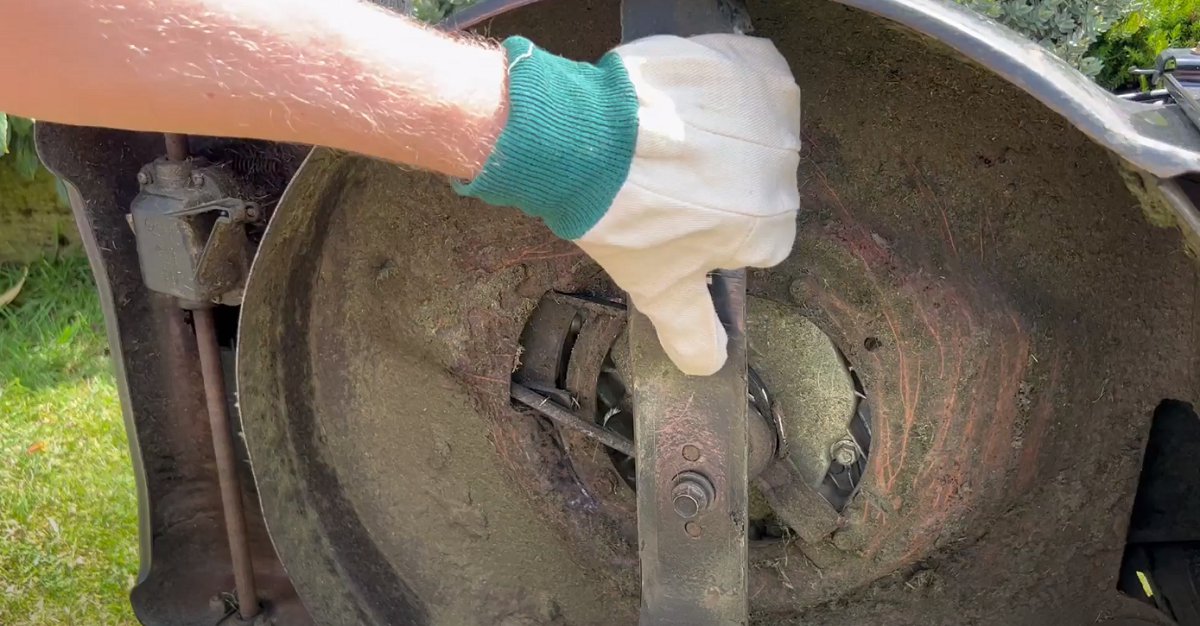
It might be hard to turn at first, but once it starts to move a little bit it should get easier.
On a riding mower, this process usually looks a little bit different. Most riding lawn mowers will have a flywheel on top of the engine that you can try turning once you’ve lubricated the engine.
If you can’t get a good enough grip on the flywheel as is, you might have to take the flywheel cover off to get better leverage.
Just be careful when turning the flywheel because they usually have a number of plastic and aluminum components that can be damaged relatively easily.
If the engine had been seized, the blade and/or flywheel shouldn’t have turned at all before this process.
If they are able to turn after lubrication, that means you’ve successfully freed your engine!
5) Add Fresh Engine Oil
After you have managed to get your engine cranking again by hand, make sure that you put in fresh motor oil before trying to get the mower started.
Follow the manufacturer’s recommendations for the type of oil to use, and the amount to put in.
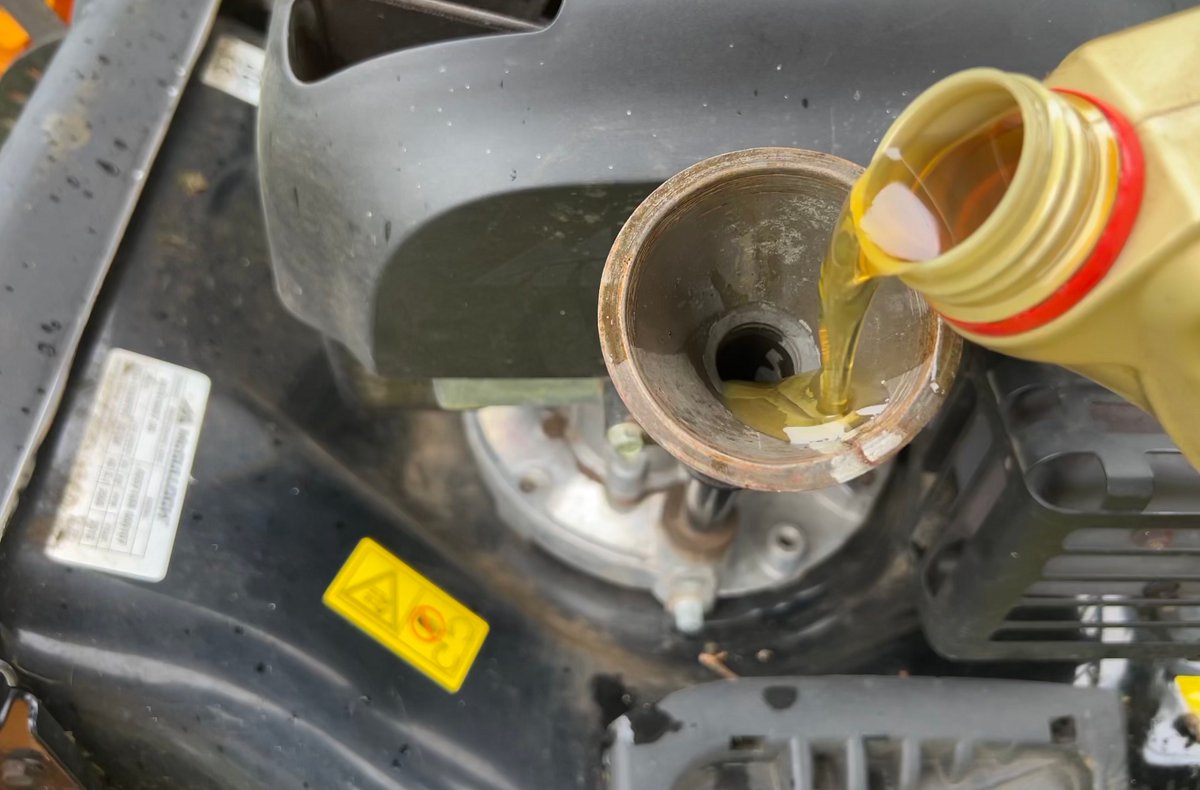
I have found it works best to add oil slowly and check the dipstick a few times to make sure not to accidentally add too much.
Once you’ve put the proper amount of fresh oil in the reservoir, give your blade or flywheel a few more turns so that some of the new oil gets incorporated before fully starting the engine.
6) Reinstall Spark Plug
The last step is simply to reinstall the spark plug and ignition cable so that you can get your lawn mower’s engine running again.
Just reverse the removal procedures, and buy a new spark plug to put in if your old one is in bad shape.

With your spark plugged in and ignition wire connected, you should be all set to start your mower up.
You might notice a bit of smoking as the penetrating oil gets burned off, but this shouldn’t last too long.
If My Engine is Not Seized…What Could Be the Problem?
Hopefully you haven’t already followed all the steps of how to unseize a lawn mower engine before figuring out that you’ve got a different problem entirely, but sometimes that happens.
For example, you could have a lawn mower turning over but not starting.
While you might think a seized engine is responsible for your problem, it might just be a bad spark plug or air filter, or even a fuel delivery issue.
The best way to diagnose other types of issues is to check for a spark first, and then make sure that the fuel delivery system is working as it should. Usually one of these two systems is to blame.


Very exacting! Thanks.
Worked! I had let the oil run out on a Honda lawnmower. It was seized. The cord would not pull, and blade would not rotate. I was considering getting rid of it or having it repaired. I am glad that I found your guide. I added WD-40 to the plug chamber and waited. Nothing happened at first. I added more.. waiting again.. hours.. then pushed the blade hard with gloved hands. It moved. After adding fresh oil and putting plug back in, started and ran again! Thanks for your help!
I love a good success story! Very glad to hear you got your mower running again, Charles 🙂
Cheers, Tom.
Thank you for this. I’ll have a professional do this for me as I am unable to do this by myself. What a good site this is.
Hi Dawn,
That’s a wise call if you’re not confident of being able to do the work yourself. There have been a few jobs above my skill level that I’ve attempted in the past, and then regretted it afterward.
I hope you get your mower fixed!
Cheers, Tom.
Great article. Very, very helpful! Thank you very much.
Glad you found it useful, Carol 🙂
Thank you! I am a 74 year old woman who has only put in gas and oil and replaced the air filter on a lawnmower. Now I know how to fix a seized motor. Your directions were very clear and easy to follow. Thanks again for teaching me and saving me money!
Glad that it was of some help, Margie 🙂
Happy mowing!
Tom.
Leaf machine Engine stopped running while I was pulling in on my tractor, so I did not hear it shut down. I thought it was out of gas but pull cord is siezed. Could it also be a broken push rod and how can I diagnose that without pulling the engine apart?
Hi Rick,
To inspect the push rods you would need to remove the rockers first, or at least remove the valve cover. A problem with a valve guide, push rod, or a rocker arm can cause the engine to seize up. I think you will need to break out a socket wrench and take a look inside to see what is going on.
I hope you get this fixed soon!
Tom.
My neighbor neglected to check his oil for a snowblower engine. 250 CC Briggs and Stratton. We were standing there after he cleared some snow and the engine squeaked for a second and stopped. Could not pull the starter cord so assumed the engine was seized. I did the steps you directed The engine did free up. After starting the engine there is a noticeable knock. I’m wondering if there is most likely greater damage, i.e. rod damage or crankshaft damage. I’ve read things about the gas combustion or carbon build up but I’m thinking it’s more serious than that. Just looking for your comments and/or ideas.
Hi Dan,
If the engine overheats and is seized, then there is likely some extensive damage. You could pull the push rods and check the valves, but it’s probably something in the engine that expanded, creating friction and causing the engine to seize. The only way to really tell is to pull the engine apart and look for any wear. You could start by removing the head and checking the top of the pistons. Next, you could remove the block to see inside the crank. I’m pretty sure you’ll find something that looks polished off or broken.
I hope you find an easy fix.
Tom.
My Honda 5 HP pressure washer engine seized of oil starvation. I searched for repair ideas and found this incredible article. I had always believed that once an engine seized that repair would cost close to buying a brand new engine. I gave this article a try and followed it closely. Since the pressure washer pump is attached to the shaft where a blade would be on a lawn mower, I removed the pull handle assembly. I then put a socket and ratchet on the nut at the center of the flywheel and turned clockwise. This gave me the leverage necessary to move the piston. I invested less than $20 for a quart of oil and a spray can of PB Blaster. The engine and pressure washer both work again as if the engine never seized! Thanks to Honda for making a durable product and special thanks to lawnmowerguru.com for sharing their expertise.
Hi!
It’s brilliant to hear you got it working again. So glad the tips helped 🙂
Thanks for stopping by!
Tom.
Thank you! I had the same issue as the previous poster and was able to restart my Honda lawnmower 20 minutes after flooding the cylinder area with PB Blaster.
That’s awesome. I’m glad you found it useful!
Thanks for your comment 🙂
Tom.